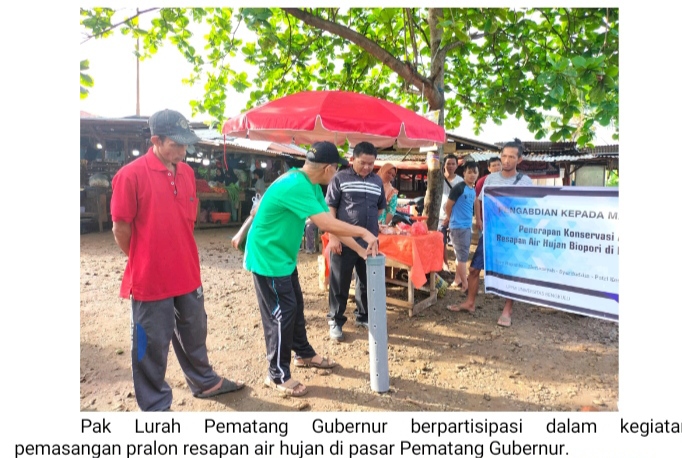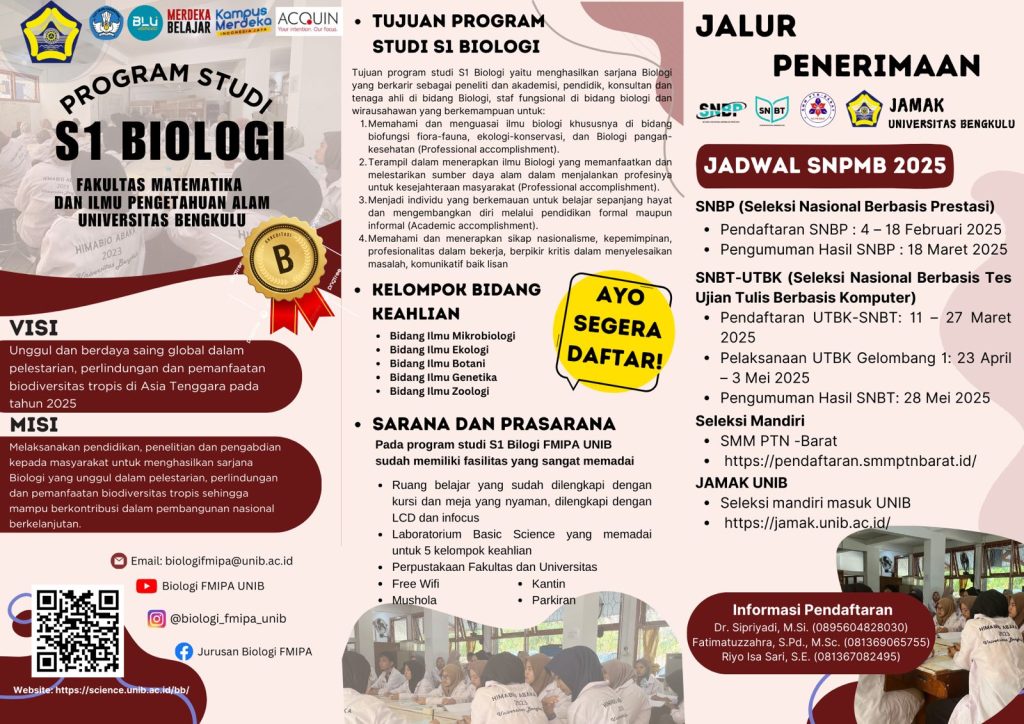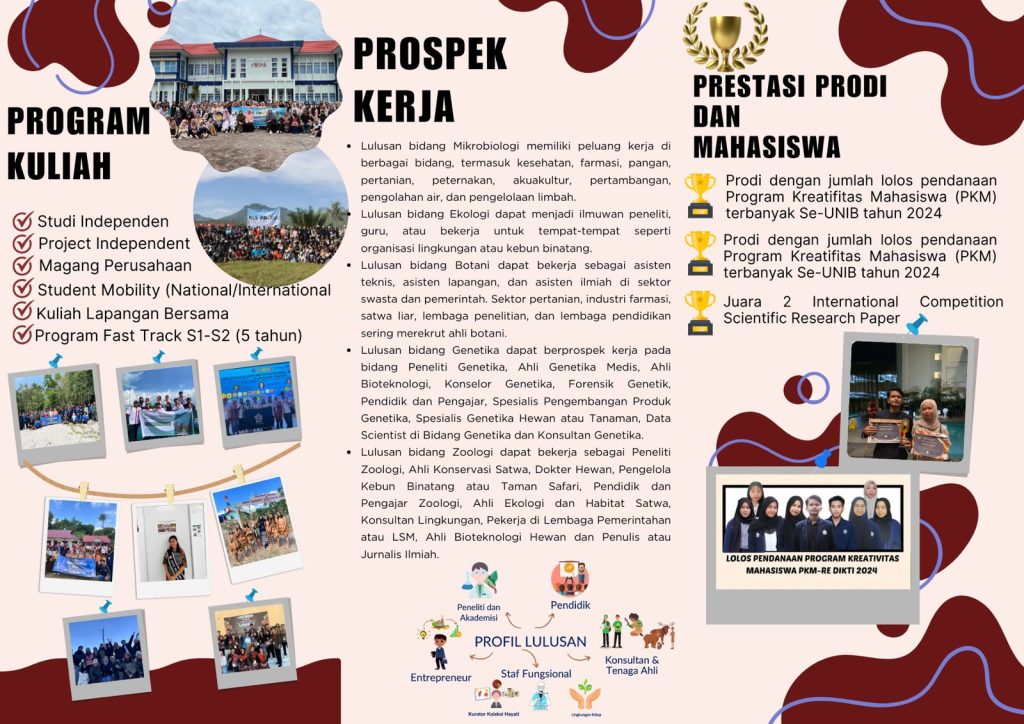
Socializing the Installation of Rainwater Infiltration in the Muara Bangkahulu District by Biology Lecturer from FMIPA University of Bengkulu
Heavy rains have been falling in Bengkulu City over the past few months, causing low-lying regions to flood a while back. Geographically speaking, Bengkulu City is a region with a significant potential for rainfall. Public spaces that lack or have poor drainage networks typically exist in low-inundation areas during periods of heavy precipitation. Additionally, the area is already covered with cement plaster and paving stones, causing the surface water flow to search for a low area to stagnate.
People avoid strolling in open, noticeable puddles because they are less aesthetically pleasing. Unseen stagnant water has the ability to serve as a mosquito breeding site. It follows a natural hydrological cycle to have rainy season. Runoff will direct rainwater to a low area where it will eventually seep into the ground. An endeavor to reduce runoff from rain on the ground surface is the same as trying to achieve zero runoff. However, because nearly all of the ground around the home is coated in cement, the process of infiltration into the soil in residential areas is decreasing.
Therefore, installing biopori around residential areas is crucial for attempts to conserve groundwater and prevent waterlogging. In residential areas with subpar drainage channels, this effort is utilized to shorten the time it takes for runoff to flow. Use of biopore infiltration hole medium is the answer for zero runoff in settlements. Puddles that are left standing for too long encourage the growth of moss, which makes them slippery and can cause people to trip and fall.
As rainfall seeps back into the earth, it is vital to take steps to prevent waterlogging in residential areas, enhance the attractiveness of a piece of land, and raise as much knowledge of water conservation as possible. A while back, LPPM Bengkulu University and its FMIPA instructors organized community service projects to promote the installation of biopori rainfall infiltration pipes in the Pematang Governor’s shock market and SMPN 17 in light of the aforementioned circumstances.
Private property serves as a market in Pematang Gubernur Market. The market has very little infrastructure, the traders’ stalls are small, the passageways linking them are uneven, and when it rains, the river gets even slicker. Market vendors collaborate to construct 40 points of pipes as part of the market’s rainwater collecting system. The governor, Mr. M. Taher, the village chief of Pematang Village, and SH supported this action and actively participated in drilling the ground as well. Additionally, pipes were installed at SMPN 17 in Bengkulu City, which is close to the Pematang Gubernur Market.
The service team from FMIPA, made up of Hery Haryanto, Syarifuddin, Heriansyah, and Steffanie Nurliana from the Biology Department, Faculty of Mathematics and Natural Sciences, Bengkulu University, provided advice on water conservation prior to building the rainwater catchment pipes. In order to keep a healthy and clean living environment, counseling places a strong emphasis on understanding the hydrological cycle in nature and water conservation. The assumption among market vendors and customers is that the absence of puddles and slippery areas has made them very happy and contented. Hopefully, the cleaner the market, the better the traders’ attitudes and conduct will be for their benefit.




